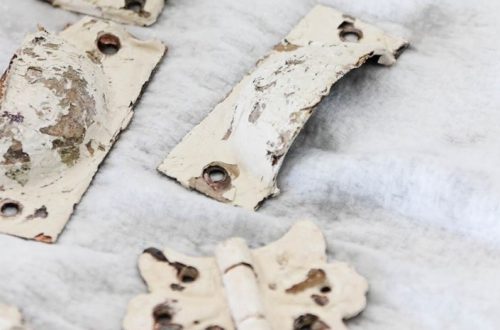In Mesopotamia, the beaker with ibex motifs is a significant archaeological discovery reflecting ancient artistry and culture. This article will delve into the historical significance and interpretation of these artifacts.
Part 1: Origins and Significance
1. Ancient Mesopotamian Art: A Glimpse into the Past
The beaker with ibex motifs, a remarkable artifact from the Jemdet Nasr period (circa 3100-2900 BCE), offers a fascinating glimpse into the rich artistic traditions of ancient Mesopotamia. This period marked a significant cultural and artistic development, characterized by the emergence of complex societies and sophisticated artistic practices.
The beaker, crafted with meticulous skill, showcases the artistry and craftsmanship of the time. Its distinctive shape and intricate decoration, featuring stylized ibex motifs, reflect the aesthetic sensibilities of the ancient Mesopotamians. The use of geometric patterns and stylized animal forms is a hallmark of this period’s art, demonstrating the artists’ ability to convey meaning and symbolism through visual imagery.
2. Cultural Iconography: The Ibex Motif
The ibex, a mountain goat known for its agility and resilience, holds significant symbolic meaning in Mesopotamian culture. It is often depicted in ancient art, representing strength, power, and fertility. The ibex motif on the beaker is not merely a decorative element but also carries deeper cultural and spiritual significance.
The stylized depiction of the ibex, with its elongated horns and graceful form, suggests a connection to the divine or supernatural. It may have been believed to possess protective powers or to symbolize the connection between the earthly realm and the celestial. The ibex motif, along with other animal and geometric symbols, reflects the complex belief system and worldview of the ancient Mesopotamians.

Part 2: Artistic Interpretations
1. Intricate Motifs and Designs
The beaker with ibex motifs is a testament to the artistic skill and creativity of ancient Mesopotamian artisans. The intricate details and stylized representations of the ibex, a symbol of strength and agility, are truly remarkable. The artist has skillfully depicted the animal’s form, capturing its essence in a few simple lines.
The geometric patterns that adorn the beaker further enhance its aesthetic appeal. These patterns, often composed of triangles, circles, and other simple shapes, create a sense of rhythm and balance. The combination of organic and geometric motifs demonstrates the artist’s mastery of form and composition.
2. Symbolic Context: A Glimpse into the Past
The ibex motif holds deep cultural and symbolic significance in ancient Mesopotamian art. It is believed to represent fertility, power, and protection. The inclusion of this motif on the beaker suggests that the vessel may have had a ceremonial or ritualistic purpose.
By studying these ancient artifacts, we can gain valuable insights into the beliefs, practices, and artistic traditions of the people who created them. The beaker with ibex motifs serves as a window into the past, offering a glimpse into the rich cultural heritage of ancient Mesopotamia.
Part 3: Archaeological Findings
1. Excavation Discoveries: Unraveling the Past
The discovery of beakers adorned with ibex motifs has been a significant breakthrough in our understanding of ancient Mesopotamian culture. These artifacts have been unearthed in various archaeological sites across the region, providing valuable insights into the artistic, social, and economic aspects of this ancient civilization.
Archaeologists have meticulously excavated these sites, uncovering layers of history and unearthing a wealth of artifacts, including pottery, tools, and jewelry. The discovery of the ibex beakers within these archaeological contexts has shed light on the cultural practices, trade routes, and artistic traditions of the ancient Mesopotamians.
2. Artifacts’ Context: Interpreting the Past
Understanding the significance of these vessels hinges on the context of their discovery. Valuable clues about their role in ancient Mesopotamian society can be derived from the burial customs, associated goods, and social status of the buried individuals.
For example, the presence of a beaker with ibex motifs in a high-status burial may suggest that it was a prized possession, potentially used for ritual or ceremonial purposes. Conversely, if it is found in a more modest burial, it may indicate that it served as a common household item.
By analyzing the context of these artifacts, archaeologists can reconstruct the lives and beliefs of the ancient Mesopotamians. They can gain insights into their religious practices, social hierarchies, and economic systems. The ibex beakers, with their intricate designs and symbolic significance, offer a fascinating glimpse into the rich and complex world of ancient Mesopotamia.

Part 4: Iconography and Symbolism
1. Divine Associations: A Sacred Connection
The ibex motifs adorning these ancient vessels may have held profound spiritual significance for the Mesopotamians. The ancient Mesopotamians often associated the ibex, with its agility and resilience, with divine beings and celestial forces. They may have viewed it as a symbol of protection, fertility, or a conduit between the earthly and divine realms.
The placement of the ibex motifs on the beakers suggests that ancient people may have used these vessels in religious rituals or ceremonies. They might have employed them to offer libations to the gods, to store sacred substances, or to use them as offerings in funerary practices. The intricate details and symbolic significance of the ibex motifs elevate these vessels to the status of sacred objects.
2. Cultural Expressions: A Window into the Past
The beakers with ibex motifs provide a fascinating glimpse into the rich cultural tapestry of ancient Mesopotamia. They offer valuable insights into the beliefs, customs, and artistic practices of this ancient civilization. The intricate designs and symbolic imagery on these vessels reflect the artistic and intellectual sophistication of the Mesopotamians.
The use of the ibex motif in particular highlights the importance of animals in Mesopotamian culture. People often viewed animals as both practical and spiritual beings, frequently portraying them in art and literature. The ibex, with its powerful and agile nature, particularly symbolized strength, vitality, and resilience, and was highly revered.
By studying these ancient artifacts, we can gain a deeper understanding of the worldview of the Mesopotamians. Their complex belief system, which intertwined mythology, religion, and cosmology, is reflected in the intricate details and symbolic meanings of their art. The ibex beakers, with their timeless beauty and cultural significance, continue to inspire and fascinate, offering a glimpse into the rich and complex world of ancient Mesopotamia.
Part 6: Preservation and Study
1. Conservation Efforts: Protecting Our Past
The preservation of ancient artifacts, such as the beakers with ibex motifs, is crucial for understanding our shared human history. These objects, often fragile and susceptible to damage, require careful handling and conservation techniques to ensure their longevity.
Museums and cultural institutions play a vital role in preserving these artifacts. They employ specialized conservators who have the expertise to clean, restore, and stabilize the objects. This involves a meticulous process of removing dirt, grime, and other contaminants, repairing any damage, and applying protective coatings.
In addition to physical conservation, it is essential to document these artifacts in detail. This includes creating detailed records, photographs, and digital scans. These records provide valuable information for future research and help to track the condition of the artifacts over time.

2. Ongoing Research: Unraveling the Mysteries of the Past
The study of ancient artifacts like the beakers with ibex motifs continues to be a fascinating area of research. Archaeologists and art historians are constantly working to uncover new information about these objects, their origins, and their cultural significance.
By analyzing the materials, techniques, and motifs used in the creation of these beakers, researchers can gain insights into the technological advancements and artistic skills of ancient civilizations. Additionally, the study of the symbolic meanings associated with the ibex motif can shed light on the religious beliefs and cultural practices of the time.
As new discoveries are made and new technologies emerge, our understanding of ancient civilizations like Mesopotamia continues to evolve. By preserving and studying these artifacts, we can connect with the past and gain a deeper appreciation for the rich cultural heritage of our ancestors.
This in-depth exploration of the history of beakers with ibex motifs offers valuable insight into the art, symbolism, and cultural significance of these ancient artifacts, enriching our understanding of Mesopotamian artistry and culture.




